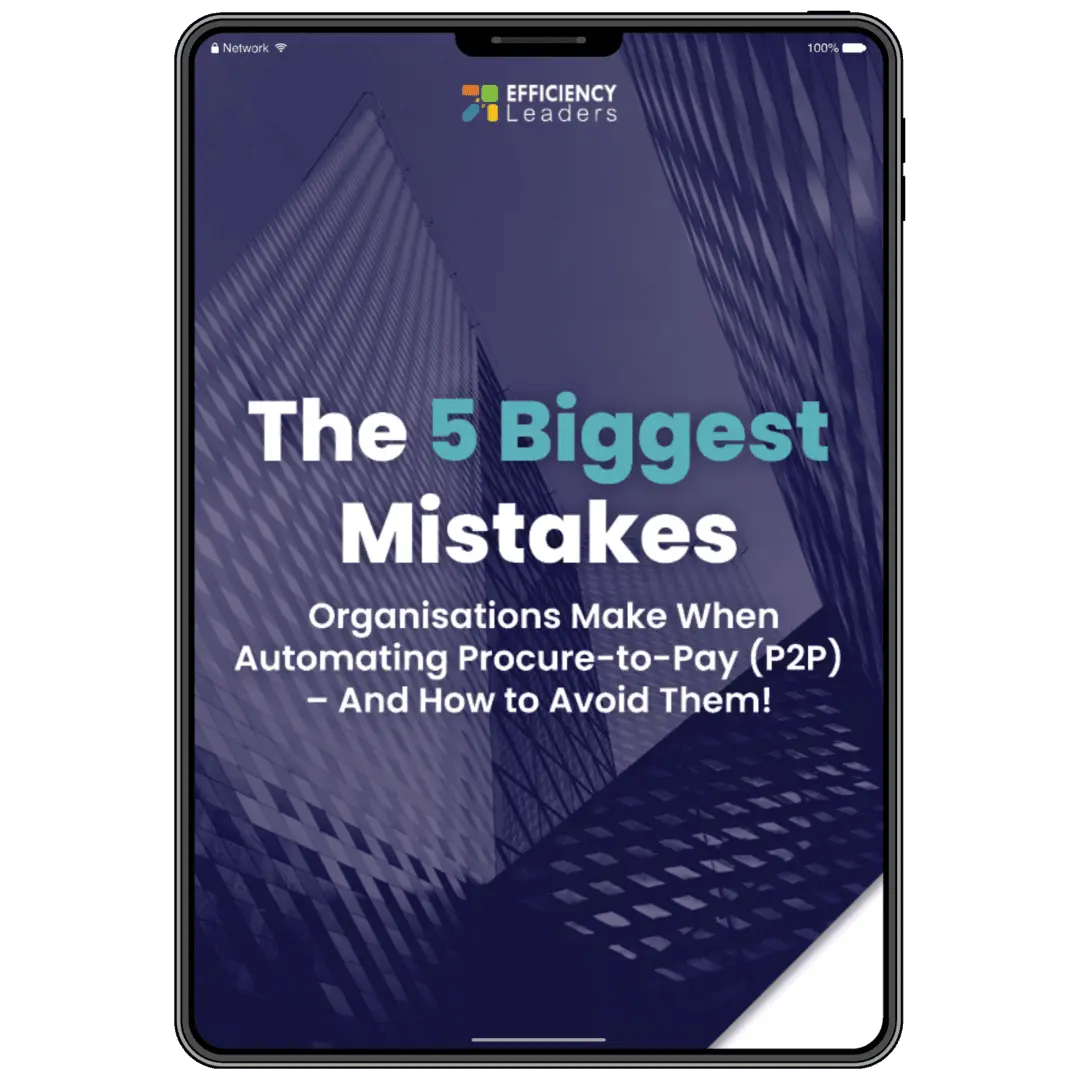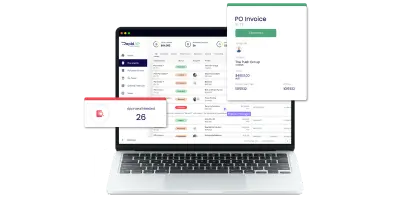Ideally, any invoice amount should match what is in the purchase order with what is actually delivered. This scenario allows for a smooth accounts payable process, from the receipt of invoice to processing, and then finally, payment and archiving. Unfortunately, such a scenario is not always the case, and so exceptions occur.
And if your organisation uses manually processed accounts payable or a mixture of automated and manual processes, exceptions can happen more often. These exceptions can cause delays in the process and hurt the relationship with your supplier.
What are the exceptions in accounts payable exactly?
An exception is any scenario where the information stated does not match what you expect to see. Mismatches can include transposed Purchase Order (PO) number or wrong pricing or multiple reasons, few listed below:
- Insufficient funds available on the Purchase Order
- Supplier deregistered for GST but claiming GST
- Supplier ABN is not registered with ATO
- Supplier not active within the ERP
- ABN details do not match vendors details in the ERP
- Incorrect Supplier code
- Bank account details not valid/don’t match
- Duplicate invoice
- Invoice and PO variance above set tolerance
- Lack of PO — If no PO was issued
- Bottleneck in invoice approval process
- Incorrect PO quoted by supplier
- Past invoice due date
- Incorrect Tax Codes
- Goods/services not delivered
- Good/services not receipted
- Incorrect GL Coding
- Approver on leave
- Lost invoice and/or supporting documentation
- Inadequate supporting documentation to justify spend
- Inadequate invoice description to justify payment
- Inaction by key person for collaboration
- Approver does not have delegation of authority
Causes of the exception can be any of the following:
- Data Accuracy Issues: Data accuracy is critical in Accounts Payable processing. Inaccurate data, such as discrepancies between the Purchase Order (PO) and the invoice or invalid supplier details, can lead to various exceptions. These issues often arise from human errors or mismatched records. Regular audits and automated validation checks can help minimise these exceptions.
- Process and Workflow Issues: Efficient processes and workflows are essential for timely Accounts Payable operations. Delays can result from bottlenecks in invoice approvals or the absence of a necessary PO. These issues may stem from unclear responsibilities or unavailability of key personnel. Streamlining workflows and implementing automated approval systems can address these challenges.
- Compliance Issues: Compliance with regulatory requirements is crucial. Issues can arise when suppliers are deregistered for GST but claim it, or when their ABN is not registered with the ATO. Regular compliance checks and up-to-date supplier details can help mitigate these risks.
- Documentation and Validation Issues: Proper documentation and validation are vital. Issues occur when invoices lack adequate supporting documents or are lost. Implementing robust documentation standards and maintaining organised records can enhance the validation process.
Sometimes, deviations are within an acceptable limit; therefore, payment can still be processed. However, some discrepancies will necessitate investigation, and so can be time-consuming.
The cost of accounts payable exceptions
Financial and time costs are the main implication of exceptions in accounts payable. Overpayments, payments for items that were never delivered, or double payment can hurt the company financially.
Not to mention the man-hours wasted on manually tracking down the missing information in your invoices, purchase orders, and other documents.
AP automation for an efficient exception management process
Accounts payable automation helps simplify and streamline the accounts payable process from procurement to invoices approval and payment. Accounts payable automation software, on the other hand, refers to the automated system designed to enhance productivity and reduce costs in the accounts payable department.
Accounts payable automation and enhanced exception management help reduce bottlenecks and enhance compliance with regulations, especially if you are dealing with global suppliers. The benefits of adapting accounts payable automation include:
- Late payment reduction – AP automation makes it easy to search and spot invoices nearing due dates.
- Granular invoice data – AP automation allows you to see fine invoice details and create analytical reports for more informed process management decisions.
- Early payment discounts – AP automation allows for a smoother and efficient exception management workflow. This enhances invoice payment turnaround time, which can work to a business’s advantage when negotiating terms and discounts.
- Reduce fraud – AP automation enhances transparency in the procurement process, which makes it easy to spot possible fraudulent activities.
Handling exceptions in accounts payable
There are specific accounts payable automation best practices that help promote a more efficient exception handling in accounts payable:
Go paperless
2024 Benchmarking Report by Accounts Payable Association mentions around 36% participants pointed to increased efficiency in the payments process particularly due to poor and legacy practices, and just too many paper-based documents and files.
Utilising an end-to-end solution to the procurement process allows businesses to eliminate the need for paperwork. Compared to paper documents, electronic records are easier to manage, search, and use.
This type of software provides firms with capabilities such as sending notifications and reminders on invoices with pending approvals. A dedicated portal for vendors may also be set up so they can do updates and verify the status of their invoices on their own.
Three-way Document Matching
Three-way matching helps in preventing payment of incorrect or even fraudulent invoices. Specifically, it involves the process of comparing three documents: the vendor invoice, the purchase order, and the receiving report.
Comparison of quantity, unit price, payment terms, and other relevant information are made to determine if they all match and appear on all three documents. It is only when all three documents match will the invoice be entered and processed as an account payable.
Configurable Business Rules & Flexible Workflows
Assuming you are processing invoices electronically, you can set up business rules and user permission to make sure that if an invoice requires approval, it goes to the right person. You can even set notifications with deadlines so that the user is aware of the invoice they need to approve. The same goes for exception handling management for the many discrepancies that can occur.
If you have an efficient and configurable AP automation solution, most invoices will just go through the entire workflow following your business rules.
Remember, a solution that requires a high-level of customisation will be costly and take a long time to implement. However, a strong AP automation solution will provide you with extremely flexible business rules and workflow automation with little or no customisation required. For example, RapidAP has a highly customisable accounts payable automation system. Check out this RapidAP review page to learn more about its top features and benefits.
Consider Using Advanced Purchase Permissions
Setting up advance permissions allows businesses to take full control over who can create orders and what they are allowed to order. This will help minimise unauthorised purchases
Maximise Benefits with Good Exception Management and AP Automation
Exception management aims to minimise and prevent the occurrence of exceptions in accounts payable. When good exception management works in tandem with accounts payable automation, businesses stand to benefit with saved company money and time, as well as maintain good relationships with their suppliers.
However, not all AP automation software is created equal, so it’s important to do your research well to find the best accounts payable software that suits your business needs.
Best-in-class software will process an invoice using the following steps:
- Step 1: The OCR capture the data and send it to the AP automation software
- Step 2: The software analyses the data searching for any anomalies and routes the invoice to the person authorised to approve this vendor, previously configured in the business rules.
- Step 3: At the same time, the invoice is also recorded and listed in the invoice library alongside a complete audit trail of who handled it and when it was handled.
- Step 4: Should there be an exception, the system would match the invoice to its vendor and carry on the workflow while notifying managers of that event.
- Step 5: The information is sent to the ERP to fulfill the payment, after approval.
In most cases, these AP automation solutions can provide ROIs in less than 13 months due to factors such as
- Time savings: Faster Processing, Reduced Approval Time, Reduced Manual work)
- Cost reduction: Headcount Reduction, Reduced cost of operations
- Reduced errors: Improved compliance, Automated exception management
- Enhanced visibility and control: Fraud prevention, Real time tracking
See how you can achieve much more using RapidAP’s Accounts Payable Automation platform.

















